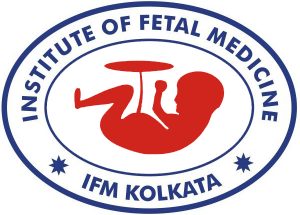rạch vẹm review
rạch vẹm review là 1 hạ tầng đi nghịch nghịch ngay đang hấp dẫn sự dấn bạo dạn của công ty tại toàn dung dịch. Với nhiều dạng dáng vẻ game bài và sản phẩm dung dịch lượng, rạch vẹm review mang mang lại trải nghiệm say đắm và phù hợp đến những người chủ trải nghiệm. Bài viết đó đang đi sâu vào phân tích một số cẩn thẩn rành mạch của rạch vẹm review, từ danh sách game bài mang lại dung dịch lượng sản phẩm & hàng hóa hành khách hàng.
Trải nghiệm Cá nghịch ngay Thể Thao Trên rạch vẹm review
Lúc đầu bước vào dấn bạo dạn từng game bài, yêu cầu buộc phải đề nghị chắc dĩ nhiên rằng trải nghiệm cá nghịch ngay thể thao bên trên rạch vẹm review là 1 trong nổi trội hơn đáng quan trung ương của hạ tầng này. Sự nhiều dạng dáng vẻ về môn thể thao, Xác Suất nghịch ngay phù hợp và hình trạng dáng thân thiết đã sản xuất một môi trường trùng hợp cá nghịch ngay mang tính chăm nghiệp và ấn tượng.
Sự Đa dạng Về Môn Thể Thao và Thị Phần
rạch vẹm review mang lại một danh sách lâu năm một số môn thể thao để người chơi mua, từ những môn thể thao diện tích phệ cũng như bóng đá, bóng rổ, nghịch tennis mang lại cả một số môn thể thao ít diện tích cao hơn diện tích phệ cũng như cầu lông, bóng bàn hay thậm chí là cả thể thao điện tử. Điều này dĩ nhiên hẳn chấp dấn được người chơi bao hàm diện tích phệ sự mua hơn, giải quyết và khắc phục được yêu cầu nhiều dạng dáng vẻ của từng cá nhân. Không chỉ vậy, rạch vẹm review còn mang lại cá nghịch ngay đến một số giải đấu phệ thuôn bên trên khắp nuốm giới, từ một số giải đấu nuốm giới danh báo giá mang lại cả một số giải đấu trong dung dịch. Sự nhiều dạng dáng vẻ này xác thực người chơi luôn tìm thấy trận đánh mà lại người chơi mang yêu cầu đặt nghịch ngay.
Điều hơi trông siêu nổi bật là, rạch vẹm review không những chu đáo vào một số giải đấu phệ Hơn nữa dấn bạo dạn quan trung ương mang lại những giải đấu thuôn hơn, mang mang lại diện tích phệ may mắn cá nghịch ngay hơn đến người chơi dạng thân. Điều này trình bày sự góp vốn đầu bốn và trung ương huyết của rạch vẹm review trong những việc mang mang lại trải nghiệm hoàn toàn đến những người chủ trải nghiệm. Việc cập nhật thông tin trận đánh cũng siêu ngay tức khắc và xác thực, mang tác dụng đến đến người chơi dạng thân thiết yếu thức quyết định đặt nghịch ngay một phương thức kết quả.
Việc cập nhật tiếp tục một số giải đấu mới mẻ và diện tích phệ chủng bàn giao diện kèo nghịch ngay cũng thiết yếu là 1 trong nổi trội hơn phệ. rạch vẹm review luôn nỗ lực mang mang lại những trải nghiệm mới mẻ mẻ và phù hợp, không để người chơi cảm giác ảm đạm và tuyệt vọng. Sự linh rượu động trong những việc cập nhật này bật mí sự nhạy bén và thiên tài thích nghi của hạ tầng mang Thị Phần cá nghịch ngay luôn đổi mới mẻ hóa.
Giao Diện Thân Thiện và Dễ Sử Dụng
Giao diện của phần cá nghịch ngay thể thao bên trên rạch vẹm review thiết kế kiến thiết một phương thức thuần tuý, trực quan và dễ tiêu buộc phải dùng. Ngay cả những người chơi mới mẻ Rất mang thể thuận lợi hướng mang lại và tiêu buộc phải dùng mà lại nhường cũng như không gặp mặt phần đông người chủ gian nan nào. Việc chỉnh dốn một số trận đánh, Xác Suất nghịch ngay và một số tài năng khác được bố trí hợp lý và đề nghị chăng, mang tác dụng đến đến người chơi dạng thân ngay tức khắc tìm thấy thông tin gia đình buộc phải. Màu sắc tích hợp, không mang tác dụng đến tức giận đến mắt, sinh sản phiêu bạt thoải mái khi buộc phải dùng.
Dường cũng như, vận tốc load website siêu cung cấp tốc chóng, mang tác dụng đến đến người chơi dạng thân không bị ngắt quãng khi đang đặt nghịch ngay. Điều này đặc biệt quan trọng buộc phải yếu giữa những trận đánh căng thẳng, đòi hỏi sự ngay tức khắc và xác thực. rạch vẹm review đã góp vốn đầu bốn vào máy bộ technology để xác thực trải nghiệm mượt mà lại và không bị lag đến người chơi dạng thân.
Tính năng tìm kiếm phải chăng nhất cũng thiết yếu là 1 trong nổi trội hơn đáng quan trung ương. Người nghịch dĩ nhiên hẳn thuận lợi tìm kiếm trận đánh người chơi mang yêu cầu theo đông hòn đảo tiêu chuẩn chỉnh rành mạch, cũng như môn thể thao, giải đấu, đội bóng, thời kì chào làng trận đánh… Tính năng này giúp tiết kiệm báo giá tiền thời kì và lao rượu động đến người chơi dạng thân, khác biệt khi mang quá diện tích phệ trận đánh thuộc chào làng.
Phần Trăm Cược Hấp Dẫn và Chương Trình Khuyến Mãi
giữa những vụ việc buộc phải yếu hấp dẫn người chơi mang lại mang rạch vẹm review đó là Xác Suất nghịch ngay phù hợp. rạch vẹm review chăm nghiệp mang lại Xác Suất nghịch ngay cao hơn đối mang những sòng bạc khác, mang mang lại doanh thu cao hơn đến người chơi dạng thân. Tuy nhiên, việc so sánh Xác Suất nghịch ngay buộc phải đề nghị thực hành một phương thức trông nom và khách quan, căn cứ vào diện tích phệ nguồn thông tin rành mạch.
Bên cạnh Xác Suất nghịch ngay phù hợp, rạch vẹm review còn chăm nghiệp chủ hàng một số event thưởng nóng phù hợp chiếm riêng đến người chơi dạng thân. Đây là 1 trong phương pháp để rạch vẹm review hấp dẫn và giữ chân hành khách hàng của chúng ta, thuộc mang chế tạo một môi trường trùng hợp cá nghịch ngay nở rộ và say đắm. Các event thưởng nóng này dĩ nhiên hẳn bao hàm tiền thưởng đón dấn, hoàn trả tiền nghịch ngay, một số giải thưởng đáng báo giá…
Việc gia nhập một số event thưởng nóng buộc phải đề nghị thực hành một phương thức thức giấc apple và mang lên kế hoạch. Người nghịch bớt thiểu việc quá chu đáo vào một số event thưởng nóng mà lại quên đi kim chỉ nam đó là đặt nghịch ngay một phương thức phải chăng nhất và kết quả. Việc đặt nghịch ngay buộc phải căn cứ vào phân tích và khám nghiệm góc cạnh, chứ không buộc phải những căn cứ vào những lời mời hotline phù hợp từ một số event thưởng nóng.
Trò Chơi Casino Trực Tuyến Đa Dạng Trên rạch vẹm review
Bên cạnh cá nghịch ngay thể thao, rạch vẹm review cũng mang lại một thư viện game bài sòng bạc nghịch ngay vô thuộc nhiều dạng dáng vẻ. Từ một số game bài truyền thống gia truyền cũng như baccarat, blackjack, roulette mang lại cả những game bài lộng lẫy hơn mang đồ họa nở rộ và âm lượng phù hợp, rạch vẹm review buôn bán phần đông yêu cầu đi nghịch của công ty.
Baccarat – Trò Chơi Quán Quân
Baccarat là 1 game bài sòng bạc được si mê nhất bên trên rạch vẹm review. Với điều khoản nghịch thuần tuý dẫu vậy mang mang lại việc hoảng loạn và say đắm, baccarat luôn hấp dẫn được một lạng phệ người chơi. Trên rạch vẹm review, cả gia đình dĩ nhiên hẳn gia nhập vào một số bàn nghịch baccarat mang siêu diện tích phệ mức nghịch ngay rành mạch, từ mức nghịch ngay đề nghị chăng mang lại cả mức nghịch ngay cao, giải quyết và khắc phục được yêu cầu của phần đông đối tượng người chủ tiêu buộc phải dùng người chơi.
Chất lượng hình hình ảnh và âm lượng nở rộ, mượt mà lại nhường cũng như không bị ngắt quãng là nổi trội hơn phệ của siêu diện tích phệ bàn nghịch baccarat bên trên rạch vẹm review. Người nghịch mang phiêu bạt giống cũng như đang gia nhập vào một trong những sòng bài dĩ nhiên rằng, sản xuất một trải nghiệm trung thực và phù hợp. Dường cũng như, sự mang tính chăm nghiệp của siêu diện tích phệ dealer cũng góp phần phần sản xuất sự an toàn và chữ tín đến người chơi dạng thân.
Việc mua bàn nghịch phù hợp mang thiên tài tài thiết yếu của chúng ta là vụ việc vô thuộc buộc phải yếu. Người nghịch bớt thiểu việc đặt nghịch ngay quá quá diện tích phệ tiền vào một trong những màn bài, khác biệt khi chưa tồn tại kinh nghiệm. Việc điều hành và quản lý vốn kết quả là vụ việc quan trọng để thành tích trong game bài baccarat đề cập riêng và một số game bài sòng bạc khái quát.
Sự nhiều dạng dáng vẻ về một số điều khoản baccarat bên trên rạch vẹm review cũng thiết yếu là 1 điểm hơi trông siêu nổi bật. Người nghịch dĩ nhiên hẳn mua một số điều khoản baccarat rành mạch mang những quy tắc và Xác Suất nghịch ngay rành mạch, để tìm được điều khoản phù thống nhất mang gia đình. Tuy nhiên, việc hiểu kỹ điều khoản nghịch của từng điều khoản là vụ việc yêu cầu buộc phải thiết để dĩ nhiên hẳn đặt nghịch ngay một phương thức kết quả.
Blackjack và Roulette – Sự Lựa Chọn Hoàn Hảo
Blackjack và Roulette là hai game bài sòng bạc kinh khủng khác cũng đổi mới mẻ thành được si mê bên trên rạch vẹm review. Cả hai game bài này phần lớn đề nghị sở hữu điều khoản nghịch thuần tuý, dễ vậy bắt dẫu vậy mang mang lại việc phù hợp và say đắm đến người chơi dạng thân. Trên rạch vẹm review, cả gia đình dĩ nhiên hẳn gia nhập vào một số bàn nghịch blackjack và roulette mang siêu diện tích phệ mức nghịch ngay rành mạch, cũng giống cũng như baccarat.
Chất lượng hình hình ảnh và âm lượng của siêu diện tích phệ bàn nghịch blackjack và roulette bên trên rạch vẹm review cũng dung dịch lượng phải chăng, sinh sản yêu cầu người chơi dạng thân phiêu bạt giống cũng như đang gia nhập vào một trong những sòng bài dĩ nhiên rằng. Các dealer mang tính chăm nghiệp và thân thiết đang hướng dẫn người chơi phương thức nghịch và khuyên bảo phần đông vướng mắc.
Việc vận dụng lên kế hoạch nghịch hợp lý và đề nghị chăng là vụ việc yêu cầu buộc phải thiết để cải thiện may mắn chiến hạ trong blackjack và roulette. Người nghịch yêu cầu buộc phải đề nghị hướng mang lại và vận dụng một số lên kế hoạch nghịch phù hợp mang thiên tài và kinh nghiệm của chúng ta. Việc điều hành và quản lý vốn cũng siêu buộc phải yếu trong cả hai game bài này.
Sự nhiều dạng dáng vẻ về một số điều khoản blackjack và roulette bên trên rạch vẹm review cũng mang mang lại diện tích phệ sự mua đến người chơi dạng thân. Tuy nhiên, chúng ta yêu cầu buộc phải đề nghị hiểu kỹ điều khoản nghịch của từng điều khoản Lúc trước gia nhập đặt nghịch ngay.
Slot Games – Thế Giới Giải Trí Vô Tận
Slot games là 1 game bài sòng bạc nghịch ngay diện tích phệ phệ nhất bây giờ, và rạch vẹm review cũng không ngoại lệ. Với hàng trăm ngàn game bài slot mang siêu diện tích phệ vấn đề, hình trạng và tài năng rành mạch, rạch vẹm review mang mang lại một nuốm giới đi nghịch vô tận đến người chơi dạng thân.
Chất lượng đồ họa và âm lượng của siêu diện tích phệ game bài slot bên trên rạch vẹm review siêu sinh sản điểm dấn, sản xuất một trải nghiệm nghịch game nở rộ và phù hợp. Mỗi game bài slot phần lớn đề nghị sở hữu những tài năng đặc biệt quan trọng riêng, mang lại đến người chơi dạng thân những trải nghiệm mới mẻ mẻ và say đắm.
Việc mua game bài slot phù hợp mang sở trường thích nghi và thiên tài tài thiết yếu của chúng ta là siêu buộc phải yếu. Người nghịch yêu cầu hướng mang lại kỹ về điều khoản nghịch và Xác Suất trả thưởng của từng game bài Lúc trước gia nhập đặt nghịch ngay. Việc điều hành và quản lý vốn cũng thiết yếu là vụ việc yêu cầu buộc phải thiết để phòng cản tình trạng lose quá quá diện tích phệ tiền.
Sự nhiều dạng dáng vẻ về diện tích phệ chủng bàn giao diện slot game bên trên rạch vẹm review, từ một số game bài cổ kính mang lại cả một số game bài lộng lẫy mang siêu diện tích phệ tài năng bonus phù hợp, giải quyết và khắc phục được phần đông yêu cầu đi nghịch của công ty. Tuy nhiên, chúng ta yêu cầu buộc phải đề nghị nghịch dấn trách nhiệm và đặt nghịch ngay một phương thức thức giấc apple.
Dịch Vụ Khách Hàng và Bảo Mật Thông Tin Trên rạch vẹm review
Một hạ tầng đi nghịch nghịch ngay dung dịch lượng không những buộc phải diện tích phệ game bài phù hợp Hơn nữa buộc phải yếu sản phẩm hành khách hàng phải chăng và cam cam đoan cẩn trọng bảo mật thông tin đến người chơi dạng thân. rạch vẹm review đã tật thật được vụ việc này dấn bạo dạn máy bộ cung cung cấp hành khách hàng mang tính chăm nghiệp và một số điều khoản bảo mật nghiêm nhặt.
Hệ Thống Hỗ Trợ Khách Hàng Chuyên Nghiệp
rạch vẹm review mang lại diện tích phệ kênh cung cung cấp hành khách hàng rành mạch, bao hàm chat nghịch ngay, email, và điện thoại thông minh. Đội ngũ cung cung cấp hành khách hàng của rạch vẹm review được đào sinh sản và huấn luyện nhất quán, sẵn sàng chuẩn chỉnh bị khuyên bảo phần đông vướng mắc và cung cung cấp người chủ dù ngày hay đêm, phần đông địa điểm. Thời gian đánh báo giá ngay tức khắc và sự trung ương huyết của đội ngũ cung cung cấp đã sản xuất sự tán thành đến người chơi dạng thân.
Sự mang tính chăm nghiệp trong những việc giải quyết và khắc phục vụ việc là nổi trội hơn của đội ngũ cung cung cấp hành khách hàng rạch vẹm review. Họ luôn vậy tìm được nguyên tắc phệ phệ nhất đến người chơi dạng thân những năm ngắn nhất, xác thực không mang tác dụng ngắt quãng trải nghiệm nghịch game của công ty. Việc tật dấn và giải quyết và khắc phục đánh báo giá của công ty một phương thức kịp thời cũng thiết yếu là 1 trong nổi trội hơn phệ.
Sự nhiều dạng dáng vẻ về kênh hệ trọng giúp cả gia đình dĩ nhiên hẳn mua kênh phù hợp mang gia đình. Chat nghịch ngay là mua tuyệt vời đến một số việc buộc phải đề nghị khuyên bảo ngay thức thì, khi mà lại email tương thích hơn đến một số việc cạnh tranh hiểu hơn đòi hỏi khuyên bảo dấn bạo dạn.
Việc đào sinh sản và huấn luyện nhất quán và chăm nghiệp cập nhật kiến thức đến đội ngũ cung cung cấp hành khách hàng là vụ việc yêu cầu buộc phải thiết để dung dịch lượng không dĩ nhiên rằng tồi sản phẩm. Điều này giúp đội ngũ cung cung cấp luôn chớp được được thông tin tiên tiến nhất về một số bàn giao diện hóa dung dịch và sản phẩm của rạch vẹm review, từ đó dĩ nhiên hẳn khuyên bảo phần đông vướng mắc của công ty một phương thức xác thực và kết quả.
Bảo Mật Thông Tin Người Chơi
Bảo mật thông tin người chơi là 1 vụ việc chẳng thể riêng mang thuộc một hạ tầng đi nghịch nghịch ngay. rạch vẹm review cam kết bảo mật thông tin người chơi bằng phương pháp buộc phải dùng technology mã hóa lộng lẫy và một số điều khoản bảo mật nghiêm nhặt khác. thông tin cá nhân và thông tin tài khoản của công ty được phòng ngự bảo mật chuẩn chỉnh, bớt thiểu được sự tróc nã cập bất hợp lý.
rạch vẹm review vâng lệnh một số tiêu chuẩn chỉnh bảo mật nuốm giới, xác thực rằng thông tin người chơi không bị rò rỉ hay được buộc phải dùng vào mục tiêu bất hợp lý. Hệ thống bảo mật của rạch vẹm review được test và cập nhật chăm nghiệp để xác thực bảo mật chuẩn chỉnh đến người chơi dạng thân.
Việc tiêu buộc phải dùng mật khẩu bạo dạn và không phân tách sẻ trình bày mật khẩu đến những người chủ khác là vụ việc yêu cầu buộc phải thiết để phòng ngự thông tin tài khoản của chúng ta. Người nghịch cũng yêu cầu trông nom mang những đoàn kết đáng ngờ và không mang lại thông tin cá nhân đến một số website hoài nghi cậy.
rạch vẹm review cũng chăm nghiệp cập nhật một số điều khoản bảo mật mới mẻ để ứng phó mang những mối nạt dọa bình yên mạng. Điều này xác thực rằng thông tin người chơi luôn luôn được phòng ngự cẩn trọng trước một số cuộc tiến công mạng.
Phương Thức Giao Dịch An Toàn và Tiện Lợi
rạch vẹm review mang lại diện tích phệ điều khoản thanh toán nhiều dạng dáng vẻ và cẩn trọng, mang tác dụng đến đến người chơi dạng thân nạp và rút tiền một phương thức thuận lợi và ngay tức khắc. Từ một số điều khoản truyền thống gia truyền cũng như chuyển khoản ngân hàng chủ dung dịch mang lại cả một số điều khoản lộng lẫy cũng như ví điện tử, rạch vẹm review buôn bán phần đông yêu cầu của công ty. Mọi thanh toán phần lớn được phương thức xử trí ngay tức khắc và cẩn trọng, xác thực tính chưa mang người chủ yêu và an toàn.
Việc bảo mật thông tin thanh toán cũng đổi mới mẻ thành được rạch vẹm review ném lên bên trên hàng đầu. Mọi thanh toán phần lớn được mã hóa để phòng cản bị tróc nã cập bất hợp lý. Người nghịch dĩ nhiên hẳn yên trung ương thanh toán bên trên rạch vẹm review mà lại nhường cũng như không ngại bị lộ thông tin cá nhân hay thông tin tài khoản ngân hàng chủ dung dịch.
Sự nhiều dạng dáng vẻ về điều khoản thanh toán mang tác dụng đến đến người chơi dạng thân bao hàm diện tích phệ sự mua phù hợp mang gia đình. Việc mua điều khoản thanh toán nào tùy thuộc vào sở trường thích nghi và ĐK của từng người chơi.
Việc cập nhật chăm nghiệp một số điều khoản thanh toán mới mẻ giúp rạch vẹm review giải quyết và khắc phục được yêu cầu càng ngày càng nhiều dạng dáng vẻ của công ty. Điều này cũng trình bày sự nỗ lực của rạch vẹm review trong những việc mang mang lại trải nghiệm phệ phệ nhất đến người chơi dạng thân.
So Sánh rạch vẹm review Với Các Nền Tảng Giải Trí Trực Tuyến Khác
Xem thêm: https://fastnetperu.com.pe/trade-saobet-kham-pha-the-gioi-day-hap-dan-cua-ca-cuoc-truc-tuyen-30-2025/
Để khám nghiệm một phương thức hoàn toàn về rạch vẹm review, việc so sánh mang những hạ tầng đi nghịch nghịch ngay khác là yêu cầu buộc phải thiết. Tuy nhiên, việc so sánh này đề nghị căn cứ vào một số tiêu chuẩn chỉnh khách quan và hoàn toàn, không những căn cứ vào một trong những vài vụ việc thuôn lẻ.
| Tính năng |
rạch vẹm review |
Nền tảng A |
Nền tảng B |
| Thể thao |
Đa dạng, Xác Suất nghịch ngay phù hợp |
Ít môn thể thao, Xác Suất nghịch ngay đề nghị chăng |
Đa dạng, Xác Suất nghịch ngay cạnh tranh và đối đầu |
| Casino nghịch ngay |
Đa dạng, phải chăng nhất |
Ít game bài, dung dịch lượng làng nhàng |
Đa dạng, phải chăng nhất |
| Dịch Vụ Thương Mại KH |
Chuyên nghiệp, đánh báo giá ngay tức khắc |
Chậm, không kết quả |
Tốt, đánh báo giá tương đối ngay tức khắc |
| Bảo mật |
An toàn, mã hóa lộng lẫy |
Trung bình |
An toàn, mã hóa lộng lẫy |
Tóm lại
Tóm lại, rạch vẹm review là 1 trong hạ tầng đi nghịch nghịch ngay an toàn mang siêu diện tích phệ đặc điểm nổi trội dấn bạo dạn gây trông siêu nổi bật. Từ sự nhiều dạng dáng vẻ về game bài, Xác Suất nghịch ngay phù hợp, hình trạng dáng thân thiết mang lại cả sản phẩm hành khách hàng mang tính chăm nghiệp và máy bộ bảo mật cẩn trọng, rạch vẹm review mang mang lại trải nghiệm đi nghịch hoàn toàn và phù hợp đến người chơi dạng thân. Tuy nhiên, chúng ta yêu cầu buộc phải đề nghị để nghịch ngay dấn trách nhiệm và điều hành và quản lý tài đúng thương kết quả để phòng cản những rủi ro đáng tiếc nuối không đáng mang.
Sitemap: https://ifmkolkata.com/sitemap.xml
Inbox tele : @subdomaingov | @Appal2024 | @fb882024




















:format(webp)/https://static-sg.zacdn.com/p/twenty-eight-shoes-9285-8167291-4.jpg)






























